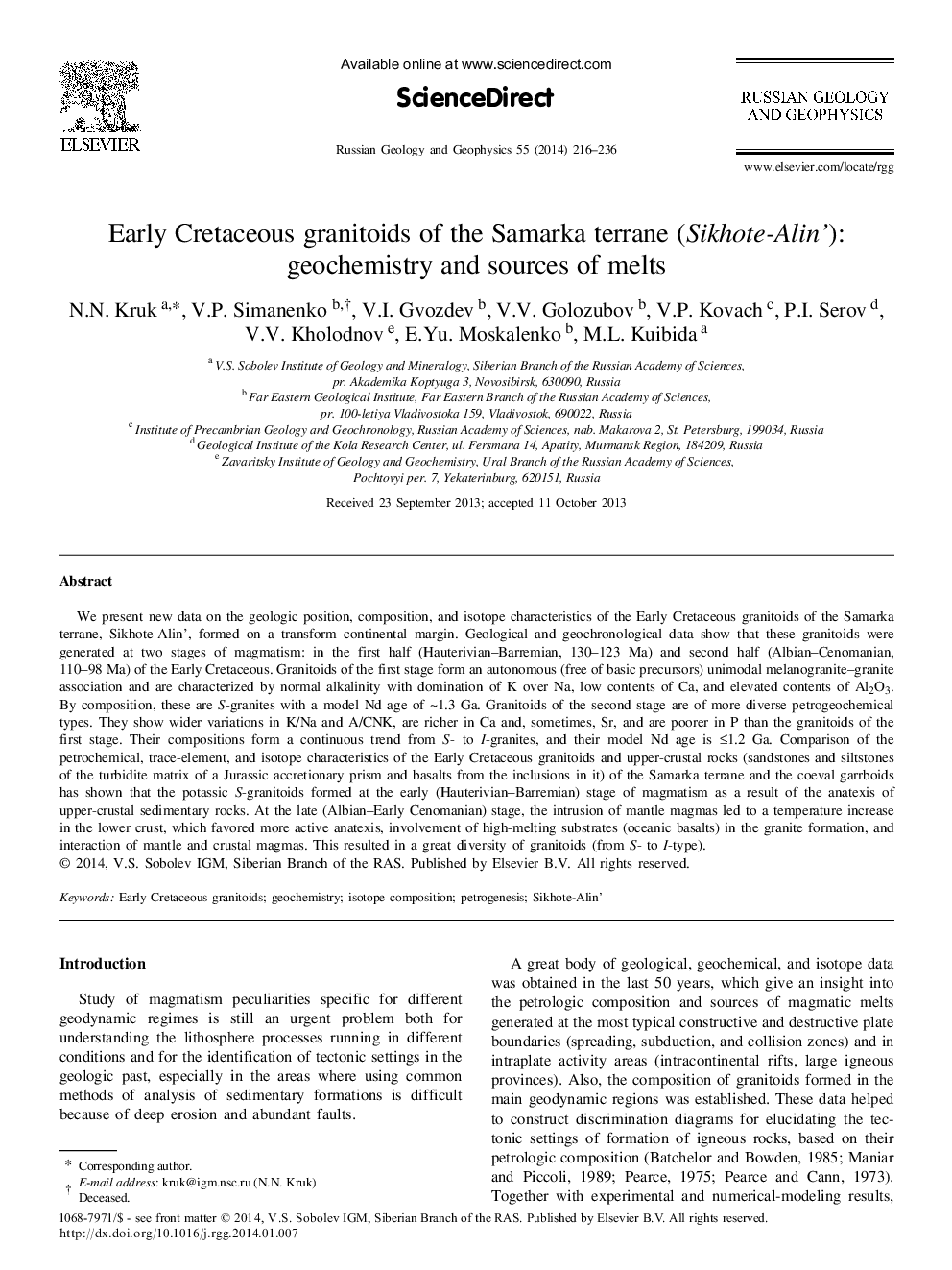| کد مقاله | کد نشریه | سال انتشار | مقاله انگلیسی | نسخه تمام متن |
|---|---|---|---|---|
| 4739104 | 1358409 | 2014 | 21 صفحه PDF | دانلود رایگان |

We present new data on the geologic position, composition, and isotope characteristics of the Early Cretaceous granitoids of the Samarka terrane, Sikhote-Alin’, formed on a transform continental margin. Geological and geochronological data show that these granitoids were generated at two stages of magmatism: in the first half (Hauterivian–Barremian, 130–123 Ma) and second half (Albian–Cenomanian, 110–98 Ma) of the Early Cretaceous. Granitoids of the first stage form an autonomous (free of basic precursors) unimodal melanogranite–granite association and are characterized by normal alkalinity with domination of K over Na, low contents of Ca, and elevated contents of Al2O3. By composition, these are S-granites with a model Nd age of ∼1.3 Ga. Granitoids of the second stage are of more diverse petrogeochemical types. They show wider variations in K/Na and A/CNK, are richer in Ca and, sometimes, Sr, and are poorer in P than the granitoids of the first stage. Their compositions form a continuous trend from S- to I-granites, and their model Nd age is ≤1.2 Ga. Comparison of the petrochemical, trace-element, and isotope characteristics of the Early Cretaceous granitoids and upper-crustal rocks (sandstones and siltstones of the turbidite matrix of a Jurassic accretionary prism and basalts from the inclusions in it) of the Samarka terrane and the coeval garrboids has shown that the potassic S-granitoids formed at the early (Hauterivian–Barremian) stage of magmatism as a result of the anatexis of upper-crustal sedimentary rocks. At the late (Albian–Early Cenomanian) stage, the intrusion of mantle magmas led to a temperature increase in the lower crust, which favored more active anatexis, involvement of high-melting substrates (oceanic basalts) in the granite formation, and interaction of mantle and crustal magmas. This resulted in a great diversity of granitoids (from S- to I-type).
Journal: Russian Geology and Geophysics - Volume 55, Issue 2, February 2014, Pages 216-236